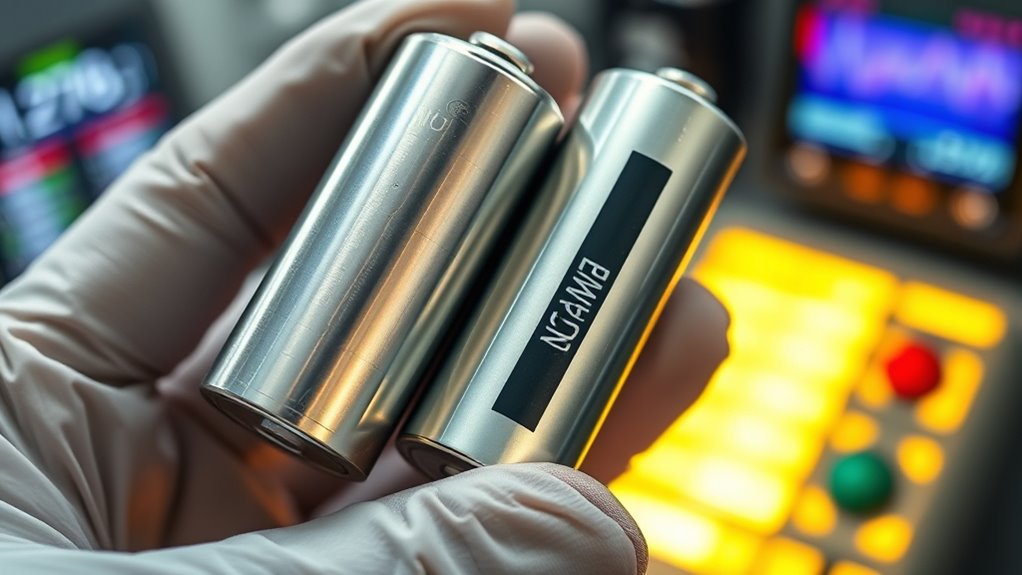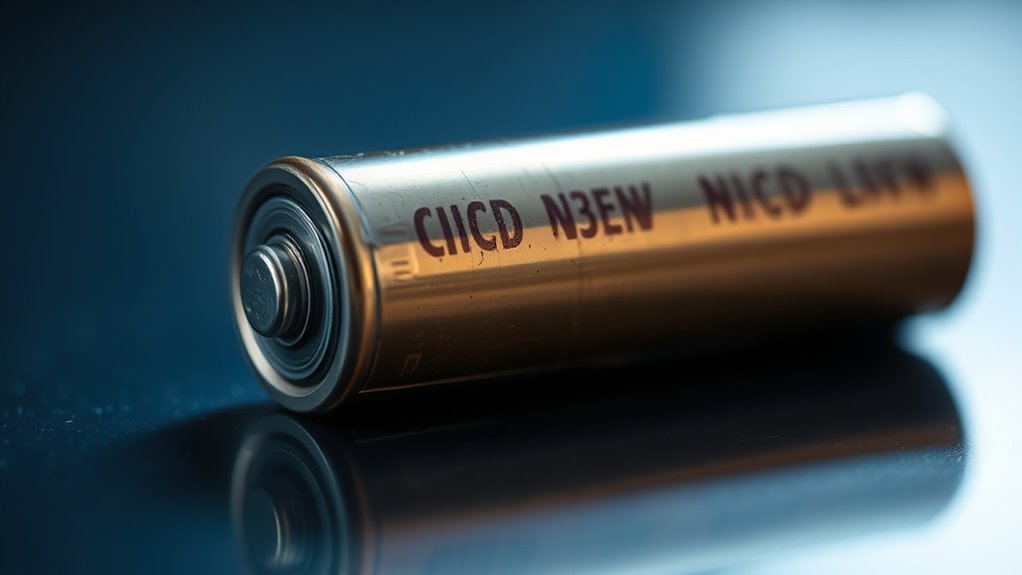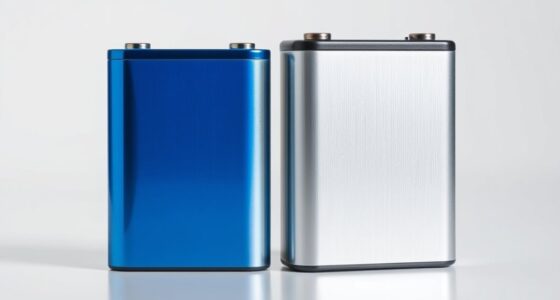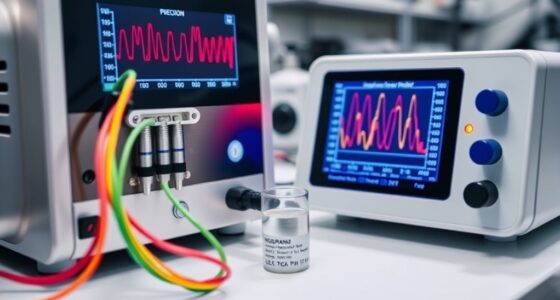The idea of a memory effect in NiCd and NiMH batteries is a common myth. While NiCd batteries sometimes showed signs of capacity issues after partial charges, modern NiMH batteries are much less affected. Capacity loss actually results from chemical aging and repeated cycling, not from partial discharges. Knowing the truth can help you take better care of your batteries, so if you stay tuned, you’ll uncover more about how battery health truly works.
Key Takeaways
- The memory effect primarily affects older NiCd batteries; modern NiMH batteries are largely immune.
- Partial discharges do not cause a true memory effect; capacity loss results from chemical degradation over time.
- Frequent partial charging increases cycle count but does not lead to significant capacity loss from memory.
- Advances in battery technology have minimized the susceptibility of NiMH batteries to the memory effect.
- Proper battery care focuses on avoiding deep discharges and managing aging, not worrying about partial charge cycles.

Have you ever noticed your rechargeable battery seems to lose capacity after repeated partial charges? If so, you’re probably wondering what’s causing this decline. One common explanation involves battery cycling, which is the process of repeatedly charging and discharging your batteries. Each time you do this, the battery undergoes physical and chemical changes that can lead to capacity loss over time. This capacity loss isn’t necessarily due to the so-called memory effect, but rather a natural consequence of how batteries age with use. When batteries are frequently partial charged, they go through many cycles that gradually diminish their ability to hold a full charge. This phenomenon is often misunderstood as the memory effect, but in reality, it’s mostly a result of battery aging and the effects of repeated cycling.
The idea of the memory effect suggests that if you don’t fully discharge your NiCd or NiMH batteries before recharging, they “remember” the smaller capacity and only provide that partial energy, making you think they’ve lost capacity. However, this isn’t entirely accurate. The real issue is that each partial cycle contributes to capacity loss, but not because of a memory effect. Instead, it’s due to the gradual buildup of active material degradation inside the battery. This degradation limits the amount of energy the battery can store during each cycle, leading to a lower overall capacity. So, while partial charging might seem to cause a “memory,” what’s actually happening is that the battery’s chemistry is slowly deteriorating from repeated use.
Additionally, advancements in battery technology have reduced the susceptibility of modern NiMH batteries to the memory effect, making partial charging less problematic than in the past. To minimize capacity loss from battery cycling, it’s best to avoid consistently shallow cycles when possible. Fully discharging and recharging batteries occasionally can help maintain their health, but frequent partial cycles are less damaging than deep discharges. Modern NiMH batteries are less susceptible to the memory effect, and many manufacturers now recommend partial charges without concern. Still, the key point remains: capacity loss over time is primarily due to battery aging and the cumulative effects of cycling, not a true memory effect. If you notice your batteries aren’t lasting as long as they used to, it’s more likely due to this natural wear-and-tear rather than a mythological memory phenomenon. Understanding this can save you from unnecessary worries and help you better care for your rechargeable batteries.
Frequently Asked Questions
Can the Memory Effect Occur in Lithium-Ion Batteries?
No, the memory effect doesn’t occur in lithium-ion batteries due to their different battery chemistry. Unlike NiCd and NiMH batteries, lithium-ion cells don’t develop user misconceptions about partial charges affecting capacity. Instead, you should focus on avoiding overcharging or deep discharging to prolong their lifespan. Proper care guarantees your lithium-ion batteries stay healthy, and you won’t need to worry about the myth of the memory effect impacting their performance.
How Can I Prevent the Memory Effect in My Batteries?
To prevent the memory effect in your batteries, perform regular memory maintenance by fully charging and then fully discharging them periodically. This helps maintain accurate capacity. Also, consider battery recalibration, which involves deep cycling your batteries occasionally to reset their battery management system. Avoid partial charges or discharges, as these can exacerbate memory effects in NiCd and NiMH batteries. Proper care guarantees your batteries stay reliable and last longer.
Does Charging Habits Influence the Memory Effect?
Your charging habits substantially influence the memory effect and overall battery longevity. If you frequently do partial charges instead of full cycles, you may increase the risk of memory effect in NiCd batteries, but it’s less of an issue with NiMH. To maximize battery lifespan, avoid overcharging or deep discharges, and choose regular, balanced charging sessions. Good habits help maintain ideal performance and extend your battery’s useful life.
Are There Specific Brands Less Prone to Memory Effect?
Think of your battery as a trusted friend — some brands like Eneloop and Duracell are more reliable, showing less memory effect thanks to rigorous battery testing. These brands prioritize quality and brand reliability, giving you peace of mind. While no battery is perfect, choosing reputable brands diminishes the risk of memory effect. Always check reviews and testing results to guarantee you’re investing in a dependable, long-lasting power source.
How Long Does the Memory Effect Typically Last?
The memory effect can last from a few charge cycles to several weeks, depending on your battery usage and conditioning habits. To minimize it, you should perform regular battery conditioning and fully discharge and recharge your NiCd or NiMH batteries. This process helps with capacity recovery, ensuring your batteries hold a proper charge. Consistent maintenance prevents the memory effect from profoundly impacting your battery’s performance over time.
Conclusion
In understanding the memory effect, you see it’s often misunderstood, sometimes exaggerated, occasionally overrated. You learn that NiCd batteries are more prone to it, while NiMH batteries are less affected. You realize that proper maintenance, regular cycling, and avoiding partial charges can minimize its impact. Ultimately, you grasp that knowledge empowers you to care for your batteries wisely, preserving their performance, extending their lifespan, and debunking myths with facts.










